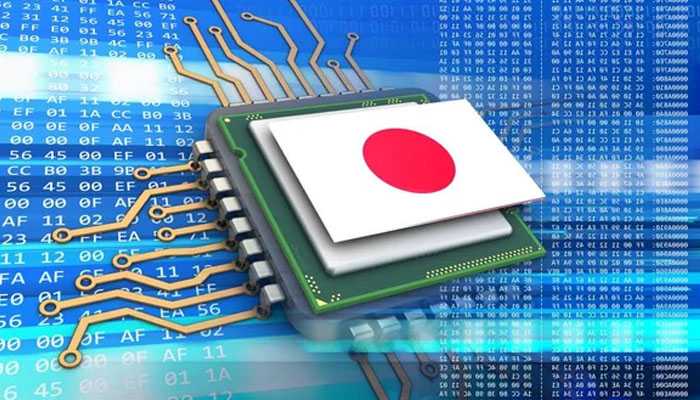Introduction
Japan’s commitment to technological innovation is similarly established by its current decision to allocate a substantial $300 million in funding toward the improvement of optical chip technology. The forward-thinking nature of this initiative points to Japan’s technology and determination to stay at the leading edge of technological advancements. This funding will no longer simply reshape the landscape of the semiconductor era but additionally have long-term, far-achieving implications across numerous industries. The potential effect of Japan’s investment in optical chip technology is great. By embracing this modern-day technology, we can enhance the overall performance and competencies of a wide variety of electronic devices.
Optical chip technology can revamp devices like smartphones, computers, self-driving motors, and AI systems. Furthermore, this investment reinforces Japan’s role as a worldwide leader in the tech industry. Japan’s technology record positions it to strengthen its economy and global competitiveness in the optical chip era. The significance of this funding extends beyond the development of the optical chip era. It signifies Japan’s commitment to using innovation and closing at the vanguard of technological progress.
Japan’s optical chip technology will globally advance networks, diagnostics, and data processing. Japan’s optical chip investment showcases its forward-thinking approach. The funding transforms devices and establishes Japan as a tech leader.
The Evolution of Optical Chip Technology:
The optical chip era shifts semiconductor technology by using light for data processing. Thanks to the use of photons as opposed to electrons, optical chips offer numerous key benefits over conventional digital chips. Firstly, they permit drastically quicker record transfer speeds, resulting in multiplied computational capabilities and reduced latency. Additionally, using photons for data transmission reduces power intake, making optical chips eco-friendly and cost-effective. Lastly, better optical chips promise faster and more efficient computing.
Optical chip progress will impact telecom, recording, and AI. This japan’s technology enables high-performance computing, handling large amounts of data quickly and efficiently.
Japan’s Strategic Investment:

Furthermore, this funding can spark collaboration, innovation, and entrepreneurship. Moreover, Japan funds optical chip improvements to stay at the forefront of technology. By making this giant investment, Japan asserts its technological prowess and commitment to innovation on the global stage.
Research and Development Initiatives:
A sizable part of the budget that has been allocated for this cause is predicted to be directed closer to research and development tasks that are specifically centered on advancing optical chip generation. These projects will entail collaborations among instructional institutions, research facilities, and private firms that are probably going to grow to be more extreme so that you can foster an environment that is conducive to step-forward discoveries in the design, fabrication, and scalability of optical chips.
This collaborative approach is of utmost importance as it allows the harnessing of diverse know-how and assets, thereby pushing the boundaries of what can be carried out in the discipline of the optical chip era. Such progress permits stimulating improvements to be made, potentially revolutionizing numerous industries that rely upon these current technologies.
Applications Across Industries:
Japan’s optical chip investment reaches beyond semiconductors, impacting multiple transformative sectors. These sectors consist of telecommunications, healthcare, and facts and facilities, among others. Using optical chips can boost telecommunication performance by improving transmission reliability and speed.
Optical chips can speed up healthcare research, diagnostics, and treatment development. Optical chips revolutionize industries by improving skills and fostering innovation.
Global Competitiveness and Economic Impact:
Japan funds optical chip technology not just for advancement but to boost global competitiveness. In today’s hastily evolving technological landscape, countries leading in developing and adopting new technologies gain a global advantage.
By investing $300 million, Japan has become a key player in optical chip research, development, and commercialization. This boosts its economic standing worldwide. With this formidable pass, Japan demonstrates its unwavering dedication to remaining at the forefront of current innovation, hence solidifying its position as a pacesetter within the worldwide technology ecosystem and safeguarding its financial prosperity for future years.
Job creation and skill development:
Japan’s investment boosts job creation in optical chip technology With increased research and development, demand rises for specialists in photonics, substance science, and chip design. This, in turn, can foster the increase of incredibly specialized and skilled personnel, further enhancing Japan’s knowledge of modern-day technologies.
Furthermore, the funding expands activity opportunities beyond R&D. Optical chips support job growth. The job prospects and optical chip advancements will strengthen Japan’s global leadership in this industry.
Collaborative International Efforts:
In today’s interconnected world, collaboration is crucial for technology initiatives. Japan’s investment in optical chip technology creates opportunities at home and for partnerships with other nations and multinational companies. By promoting international partnerships, fostering understanding, and engaging in collaborative research, Japan can boost its contribution to global optical chip generation.
Challenges and Risks:
Japan has to address the demanding situation surrounding optical chips. Not only is it crucial for Japan to deal with those demanding situations, but it’s also critical to make investments inside the infrastructure to seamlessly combine optical chips into diverse industries.
Moreover, Japan aims to address regulatory, IP, and privacy concerns for ethical optical chip technology development. Furthermore, it’s far more critical for Japan to live vigilantly and maintain tempo with the rapidly converting worldwide aggressive panorama. Japan must constantly innovate and strengthen its capabilities to maintain leadership in emerging technologies. By addressing challenges and risks effectively, Japan aims to lead in optical chip technology.
Conclusion:
Japan’s $300 million investment in optical chip generation is a pivotal moment for global technology. By the way, in semiconductor innovation, Japan shapes the era’s destiny. This funding includes implications that reach a long way beyond the confines of optical chips on their own. Instead, it can noticeably affect various industries, foster activity creation, and facilitate collaborative international efforts.
With Japan leading the way, the world eagerly awaits the transformative impact of the optical chip era. Japan’s innovation sets a high bar, urging other countries to adapt and compete effectively.


